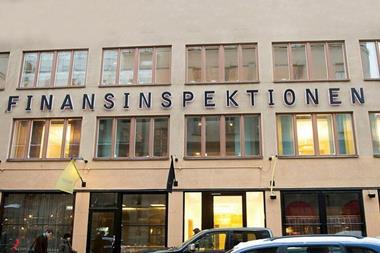The US is finally moving from being a “job loss” economy to a moderate recovery market gaining in the last 14 months more than 2.3m of the 3.3m jobs that it lost this downturn. The East Coast has generally been outperforming the national average, led by strong growth in markets such as Washington, DC, Fort Lauderdale, Orlando and Palm Beach. Other moderate to strong East Coast markets include: Tampa, Norfolk, Miami, Broward County and Northern New Jersey. Atlanta, which led the recovery of the early-1990s, has been slow to regain steam in this cycle. The East Coast’s weakest performers include: Hartford, Boston and Stamford. Hartford is among the nation’s worst performers, and it continues to lose jobs today. By contrast, Boston and Stamford remain deep in the hole from their 2001 job peaks, but have recently stopped shedding jobs.
Washington DC
Only one metropolitan area in the US failed to lose jobs during the past economic downturn. That market, Washington D.C., remains among the strongest in the nation, both from an economic standpoint and from a real estate perspective. Government growth, the creation of the homeland defense agency, the Iraq war, record government spending, and an election all created more jobs in the Washington area, leading to the lowest overall vacancy rates in the nation, with office vacancies of 7.1% as of 30 September 2004.
Washington’s demand for real estate continued to expand throughout the economic downturn; however, Northern Virginia and Suburban Maryland suffered from declining demand and rising vacancy rates. As the tech bubble burst, Northern Virginia’s office vacancy rates skyrocketed from 3.2% at mid-year 2000 to 18% in early 2003. However, spillover growth from DC has created a fairly strong recovery, and office vacancy rates are now down to near 13%. Suburban Maryland has also witnessed a fairly strong recovery. Citigroup Property Investors Research (CPI Research) predicts that Greater Washington’s suburban markets will witness declining vacancies and rising rents over the year ahead.
The real estate recovery in Greater Washington extends to housing. Demand for single- and multi-family housing, has been strong. Apartment
vacancies fell during the third quarter, and are
now in the 4.5% range for Northern Virginia, Suburban Maryland and DC, and all three markets prospered from effective rent growth over the past year. Single-family home appreciation remains extremely strong in Greater Washington, with the median home price increasing 22.3% over the
past year.
The outlook for Greater Washington remains fairly bullish; however, these red-hot property markets may witness some slowdown in their level of appreciation due to new construction. Although single-family home prices continue to climb, CPI Research believes that the pace of continued appreciation will slow, due to decreased affordability. Washington’s economy is expected to continue
outpacing the national average. Expansion by private businesses should continue to propel job growth, despite any potential slowdown in federal job creation.
New York
While government spending propelled the recovery of Washington’s economy, New York’s revival is primarily due to private sector expansion. Much publicised downsizing by investment banks and other large financial institutions has begun to be offset by expansion by smaller financial firms and general businesses. Further, growth in business services and finance has also boosted New York’s suburban markets of Northern New Jersey, Long Island, and Westchester. New York has not yet recovered all of the jobs that it lost in this economic downturn; however, it is adding jobs at the national average rate. Unlike virtually every other economic recovery, New York is at the leading edge of this expansion.
Property markets in Manhattan have generally performed well. Office rents are beginning to show signs of growing, as office vacancies drop and net absorption expands faster than new supply. Office vacancies in Midtown are currently near 7.5%, their lowest level since early 2002. More importantly, demand continues to increase, and large blocks of Class A office space are becoming increasingly scarce. Office markets in the Greater New York suburbs have also begun to recover, with vacancy rates decreasing in Stamford/Westchester and Long Island. Northern New Jersey’s office markets have shown some signs of recovery.
South Florida
During the downturn of the early 1990s, South Florida’s real estate markets languished with record high vacancy rates and plummeting rents. The area remains relatively healthy when compared to most other areas throughout the country. CPI Research believes that South Florida’s relative strength is largely due to the fact that both Fort Lauderdale and West Palm Beach continued to add jobs during the recent economic downturn. Further, all three South Florida markets (Fort Lauderdale, West Palm Beach and Miami) built significantly less space this cycle.
South Florida’s office markets have witnessed a decline in vacancy rates over the past two quarters. While office vacancies increased from 2001 through early 2004, vacancy rates averaged half of their early 1990 peaks. The apartment market also remains fairly healthy. Similarly, apartment vacancy rates have recently ticked up but remain below their 2003 peaks. CPI Research believes that most South Florida property markets should recover over the upcoming year and expects that rental rates will increase soon.
Atlanta
Atlanta shows signs of finally emerging from the one-two punch of weak employment growth and severe overbuilding. For 20+ years, Atlanta was “the city that could,” but the downturn of the past few years has taken much of the wind out of Atlanta’s sails. Job growth was a paltry 0.5% in 2001, and turned negative in 2003 and 2004. Today Atlanta is a mature economy with much of its employment base accounted for by Fortune 500 companies, the companies that tend to downsize during a national recession. These mature corporations hampered Atlanta’s growth, resulting in negative net absorption during 2001 through early
2003. Compounding the problem, Atlanta added 10.3 million square feet of office space during 2001-2003, sending the vacancy rate from 10% to more than 22%.
Atlanta is finally showing some signs of turning the corner. The office markets have witnessed positive absorption over the past several months, and vacancy rates have recently dipped below 20%. CPI Research believes that it will still be 12 to 18 months before the office market will see any rent growth. Similarly, apartment vacancies are finally beginning to slowly decline, and concessions have begun to ease.
Boston
The Boston property markets have long been volatile markets. Since the primary growth engine is usually tied to venture capital and cutting edge technological advances, the market has long endured boom-bust cycles. Corporate mergers and acquisitions have exasperated the bursting of the technology bubble, with the Bank of America-Fleet and Manulife-John Hancock acquisitions resulting in a surge of sublet space.
Office vacancy rates continue to climb in Boston, and are now in excess of 19% at the metropolitan level. CPI Research believes that Boston’s office recovery will be faster than most other forecasters are predicting; however, we still forecast that rents will not grow for 18 to 24 months. Similarly, CPI Research projects that Boston apartment market rents will remain relatively flat for the next 18 months, as new construction limits rental rate increases.
The East Coast markets offer a variety of opportunities and risks. Overall, CPI Research believes that these markets should outperform the US average, with differences across markets. Capital should continue to favour the East and West Coast markets. European capital has historically favoured the East Coast markets and we believe that this will continue. New York and Washington should be the primary beneficiaries of these capital flows. CPI Research also believes that other markets, such as South Florida and the suburban markets of Washington, will see increased capital flows over the year ahead.
Stephen Coyle is chief investment strategist of Citigroup Property Investors.












No comments yet